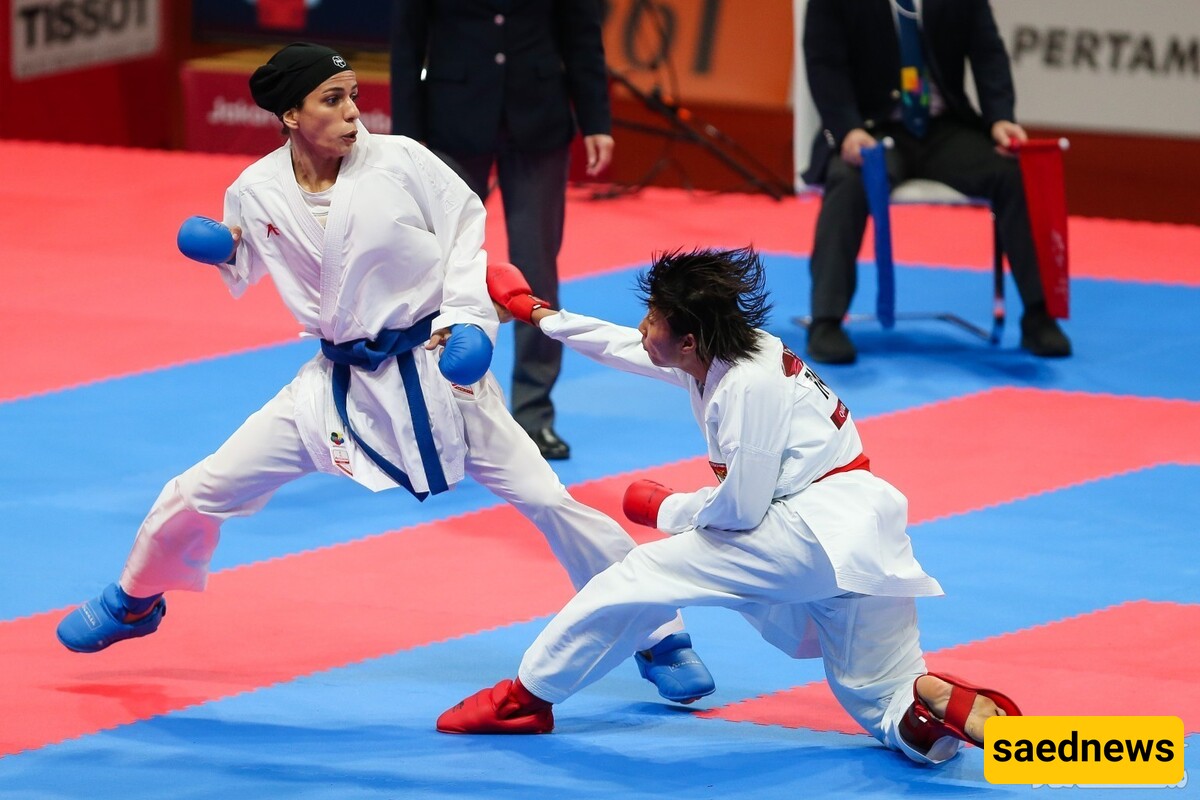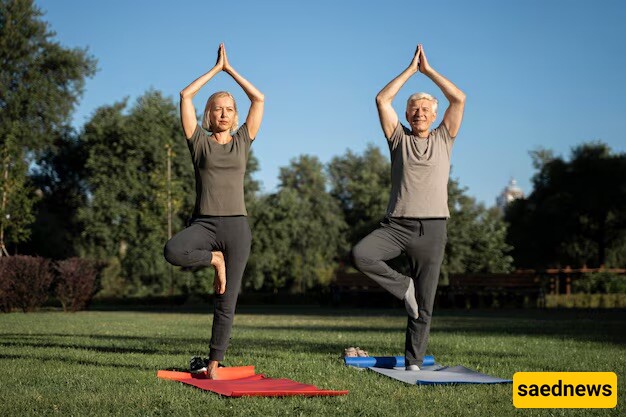Parkinson's disease affects your ability to move. Recent studies have shown that sports involving frequent contact may contribute to neurodegenerative diseases such as Parkinson’s. In this article, Saadnews will explore the types of sports that might increase the risk of Parkinson’s and provide exercises that may help in treating this condition.

Parkinson’s disease (PD) is a progressive, debilitating, and long-term disorder of the central nervous system that primarily disrupts the body's motor system. The symptoms of Parkinson’s usually develop gradually and, as the disease progresses, non-motor symptoms also emerge. The most common early signs include tremors, rigidity, slowed movements, and difficulty walking. Cognitive and behavioral symptoms often present as depression, anxiety, and a lack of interest or enthusiasm. In advanced stages of Parkinson’s, dementia may also be common. Those affected may also experience issues with sleep and sensory systems. The motor symptoms occur due to the loss of cells in the substantia nigra part of the brain, leading to a reduction in dopamine, which is a crucial neurotransmitter for maintaining normal motor patterns. This is why many treatments for Parkinson’s focus on increasing dopamine levels in the brain. The loss of neurons in other brain regions also contributes to non-motor symptoms. In addition to dopamine depletion, a protein called alpha-synuclein plays a role in Parkinson’s. Under normal conditions, alpha-synuclein helps neurons communicate with each other, but in Parkinson’s, this protein accumulates in microscopic clumps called Lewy bodies. Researchers believe that alpha-synuclein contributes to the progression of Parkinson's, and new treatments may focus on preventing the buildup of this protein. While the exact cause of Parkinson’s is not fully understood, both genetic and environmental factors play a role. Factors such as age, family history, genetic mutations, gender, exposure to pesticides, use of certain medications, and past brain injuries may contribute to the development of Parkinson’s. Interestingly, those who consume tobacco, coffee, and tea have a lower risk of developing the disease. Parkinson’s is typically diagnosed based on the signs, especially motor symptoms. Neuroimaging tests can help confirm the diagnosis and rule out other diseases. Parkinson’s usually affects individuals over 60, with men being more likely to develop it than women (with a 3:2 male-to-female ratio). Early-onset Parkinson’s, which occurs in individuals under 50, is also recognized. According to 2015 statistics, 2.6 million people worldwide suffer from Parkinson’s, and the disease leads to 117,400 deaths annually. The average life expectancy after diagnosis is 7 to 15 years. While there is currently no cure for Parkinson’s, there are treatments to alleviate symptoms. Initial treatment typically involves medications like levodopa, monoamine oxidase inhibitors, or dopamine agonists. As the disease progresses, the effectiveness of these drugs decreases, and side effects such as dyskinesia (involuntary muscle movements) may occur. At this point, a combination of drugs may be used, and their dosages may be increased. Diet and certain forms of occupational therapy have been shown to improve symptoms to some extent. In cases where the patient experiences severe motor symptoms that don’t respond to medication, surgery to implant deep brain stimulation devices may be considered. There is less evidence for effective treatments for non-motor symptoms such as sleep disorders and emotional problems.
Recent studies have indicated that injuries caused by contact sports such as boxing, rugby, and martial arts could lead to neurodegenerative diseases like Alzheimer’s and Parkinson’s. These sports cause brain injuries, which contribute to conditions that damage memory and reduce the ability to perform daily tasks. Previous studies have also shown that repeated head injuries can lead to dementia.
Exercise is one of the recommended ways to minimize Parkinson’s symptoms. Researchers have proven that exercise helps control symptoms from various aspects. Two specific neurological changes occur when exercising, and these changes are believed to contribute to the reduction of Parkinson’s symptoms:
Dopamine Levels Increase: Exercise increases dopamine levels in the body, which affects pain relief and improves the mood of the patient.
Change in the Cortical Striatum: The second factor that affects Parkinson’s after exercise is the change in the cortical striatum, which controls voluntary movements. These changes help improve balance, reduce the risk of falling, enhance walking ability, increase cognitive function, reduce sleep disorders, and improve the overall quality of life.
Recent research published in the journal Neurology showed the effects of walking on Parkinson’s. The study involved 60 Parkinson's patients who exercised at least three times a week for 45 minutes each session over six months. These individuals walked at a speed of 2.9 miles per hour, with 47% of their maximum heart rate. The results indicated that brisk walking improved motor skills and mood by 15%, increased walking speed and fitness by 7%, reduced fatigue by 14%, and improved attention by 14%. Walking helps improve the following areas and reduces Parkinson’s symptoms:
Strengthens core muscles
Improves circulation in the legs
Strengthens leg and thigh muscles
Improves the muscles of the lower back and spine
Water Exercises for Elderly with Parkinson’s
Water-based exercises are another effective way to alleviate Parkinson’s symptoms. If your elderly loved one struggles with balance issues, activities like swimming, sauna, or hot tubs can be beneficial. When the body is submerged in water, the pressure on bones and joints decreases, while exposure to warm water increases circulation, stimulating weakened muscles for better functionality. Swimming, water walking, aerobics, and similar water exercises help strengthen muscles, improve balance, and reduce Parkinson’s symptoms. You can also use water aids to support elderly individuals during water exercises.
In the elderly, muscle loss can be problematic. To prevent this, a combination of proper nutrition and physical activity can be helpful. Strength training is one such method. Weightlifting, bodybuilding, and similar exercises help the body maintain the muscle mass necessary for balance and coordination. With a proper workout plan, you can target the primary muscle groups that are essential for body coordination and help improve flexibility and range of motion in the elderly. Strength training generally doesn’t require special equipment, and elderly individuals can use simple tools like sand-filled bottles. Regardless of the stage of the disease, elderly individuals can benefit from exercise with the help of a professional caregiver. If the elderly person suffers from another condition, it's advisable to consult a doctor for guidance on selecting and adjusting the daily exercise routine.
One of the main issues for elderly individuals with Parkinson’s is difficulty maintaining balance. In this case, exercises that promote balance can be very helpful. The American Parkinson's Disease Association recommends encouraging elderly individuals to perform balance exercises at least 2 to 3 days a week, with each session lasting between 20 to 30 minutes.
Yoga has gained popularity in recent years and can also be beneficial for elderly individuals with Parkinson’s. Yoga can target the muscles of these patients and improve body coordination. Yoga is especially useful for patients in advanced stages of Parkinson’s or those with other diseases, as the movements are controlled and safely stimulate muscles without causing stress or risk. Therefore, as elderly individuals age, they may face various diseases, including Parkinson’s. However, engaging in certain exercises from a young age can help reduce the likelihood of developing this disease. I hope you have enjoyed the therapeutic exercise content, and feel free to share it with those interested in exercise.


